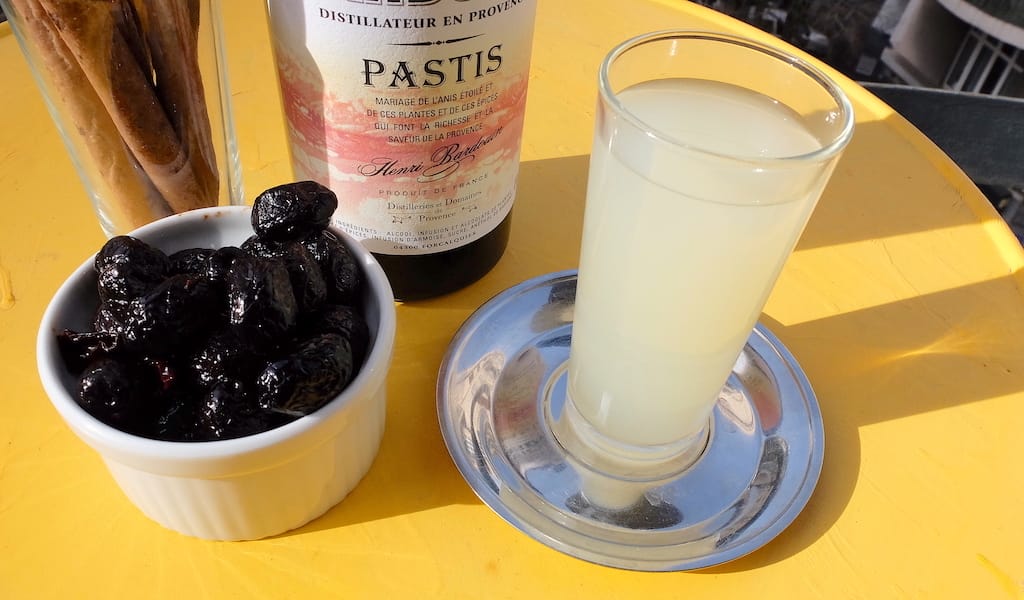In Marcel Pagnol’s iconic 1930s Marseille trilogy, dockworkers sip pastis at Bar de la Marine, a Vieux-Port bar that still stands today. Later in the century, pastis is as prominent a character as its star, Detective Fabio Montale, in Jean-Claude Izzo’s 90s Marseille noir crime novels.
The city’s quintessential quaff is as popular as ever in present day Marseille. At lunchtime and apéro hour, locals clink glasses filled with the opaque green elixir on sun-soaked terraces. A group of tracksuit-clad fans shares a bottle of Ricard on the Velodrome steps before an OM game. “It is a drink meant for sharing,” says Guillaume Strebler of local Distellerie de la Plaine.
Like rakı in Istanbul and ouzo in Athens, pastis is part of the family of anise-based beverages sipped throughout the Mediterranean. A drink that is steeped in Marseille’s penchant for anise flavors – from aniseed canistrelli cookies to the fennel that simmers in bouillabaisse. Rooted in Provence’s botanical heritage, pastis descends from medicinal anis sold at apothecaries in the Middle Ages and absinthe sipped at 19th-century cabarets.
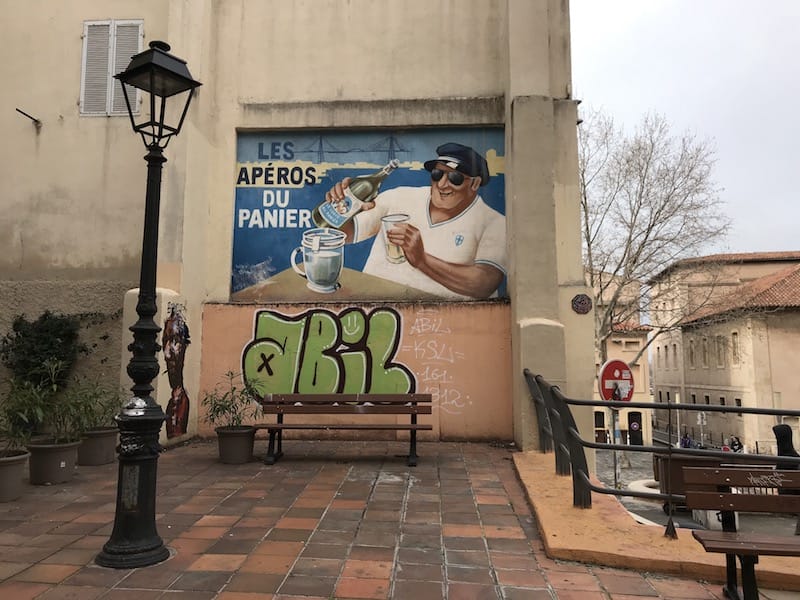
Though related, pastis and absinthe have distinct differences. The former is less boozy and is predominantly made with star anise (badiane) instead of anise (anis vert). Unlike the sugar cube and silver spoon pomp for partaking in absinthe, pastis often has sugar added in its fabrication, technically making it a liqueur, not a spirit. Lastly, pastis lacks wormwood, the ingredient that was wrongly blamed for absinthe’s hallucinatory properties. Interestingly, it was an indirect ban on the green fairy that brought the petit jaune (little yellow) into being.
When the phylloxera parasite destroyed grapevines in the mid-19th century, the French turned to absinthe for their alcoholic fix. A 1914 ban on booze containing over 16 percent alcohol forced bars to pull absinthe from their shelves. True to Marseille’s rebellious spirit, local absinthe distillers and bars continued to craft anise-based drinks on the sly. One bar would use coriander, the other fennel. “Each one made their own mélange,” explains Frédéric Bernard, owner of the Maison du Pastis.

One enterprising young salesman, Paul Ricard, saw opportunity in the Marseillais’ anise-y thirst. He hopped from bar to bar with his own recipe, selling so much of his homemade hooch he didn’t mind the numerous fines he accrued. In the early 1930s, he lobbied the government in Paris to make his drink legal. Recognizing the wealth they’d glean from the liquor tax, the officials approved Ricard’s request. He needed a name for his beverage, and the Pastis de Marseille was born in 1932.
Stemming from patisson, the Provençal patois for “mixture,” pastis is made with star anise, licorice (reglisse), and a mix of aromatic plants that sprout across Provence – including fennel, rosemary, thyme and verbena. To fabricate pastis, the powdered licorice steeps like tea while the aromatics macerate in alcohol in enormous dame-jeanne glass jugs, each one separately for a specific time to coax out their distinct flavors. The resulting macerations are then mixed together with star anise. Every producer has its own, oft-secret recipe, resulting in unique flavor profiles for each brand.
The most popular way to drink pastis is simply drenched in water, the perfect thirst-quencher for the South’s balmy temperatures.
Like many hard liquors, pastis has a 40-45 percent ABV (80-90 proof.) Hence why every pastis order comes with a pitcher of chilled water. The classic way to sip is a five-to-one ratio of water to alcohol, essentially almost filling a skinny pastis glass when you eyeball it. The result: a tall, refreshing cooler ideal for lingering afternoons in the sun.
When water and pastis mix, get ready for scientific wonder. The clear, golden pastis transforms into a cloudy, pale green. That’s due to the louche effect, in which the anethole molecules come to the surface, creating an array of tiny, light-reflecting oil droplets – the sunshine in a glass.
If you prefer a stronger drink, order a momie, a small goblet. For the anise-averse, try a traditional cocktail: the grenadine-tinted tomate, the minty perroquet or the mauresque, made with almond-scented orgeat syrup. But the most popular way is simply drenched in water, the perfect thirst-quencher for the South’s balmy temperatures. “It’s a drink for when you’re thirsty,” explains Alain Robert, head of artisanal brand Henri Bardouin, telling us how parched Provençal farmers would douse their pastis with water from village fountains after hot days in the fields.
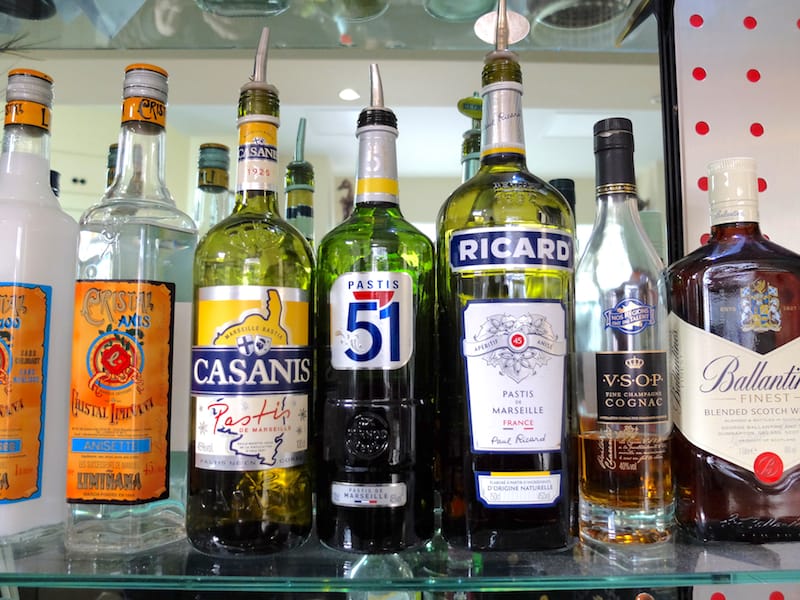
True pastis drinkers ask for their brand by name. Ordering a “pastis” is akin to grunting “beer” to a bartender. Marseille’s Corsican contingent opts for their island-born Casanis. Pastis 51, the second-most consumed pastis, is preferred by those who like less licorice. The late French musician Serge Gainsbourg notoriously ordered a “102,” double the usual dose. The brand was created by Pernod, famous for being France’s first absinthe distillery, to compete against Ricard, although the two companies merged in 1975.
Ricard, though, is still the grand poobah of pastis. They dominate the global market, selling 40 million bottles in 2018. Thanks to Paul Ricard’s marketing arsenal of catchy ads and sunshine yellow swag, these “creators of conviviality” are credited with cementing pastis into French culture in the 1930s and 40s – and keeping it one of France’s most-consumed apéritifs.
The big pastis behemoths dominate supermarket shelves and bar menus due to their corporate reach and cheaper price. Yet smaller-scale, craft distilleries have existed since pastis’ start. They celebrate the delicate aromatics that have been drowned out in the industrial versions. Here are some of our favorite producers in Marseille and Provence. All you need is a spot in the sun, some olives and some friends to share the bottle.

Distillerie de la Plaine
Marseille’s newest pastis producer began by accident. While waiting for his whiskey to age, Guillaume Strebler made a batch of pastis to publicize his new distillery. Now his flagship product, Pastis 1 is a traditional sip with the refreshing zip of fennel seeds; smoked mate and locally grown lemon verbena give the modern Pastis 2 woodsy and herbal notes. The latter can be sipped with just an ice cube – an ideal way to taste the complexity of artisanal pastis. Both feature colorful graphic labels inspired by Marseille’s port. This one-man-distillery makes only 3,500 bottles a year. Pick one up at their petite, anise-scented distillery, local markets or restaurants.
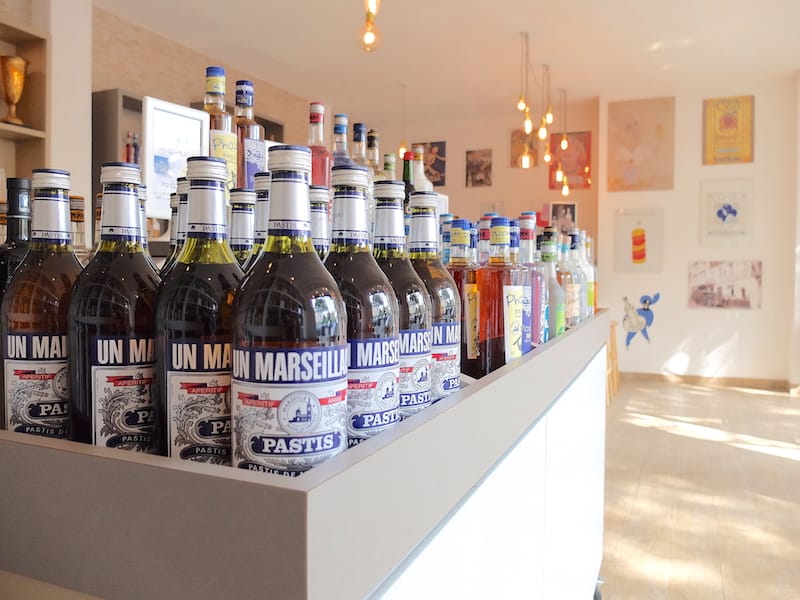
Cristal Limiñana
Famous for their anisette, this 135-year old distillery began making pastis when they relocated from Algiers to Marseille in the 1960s. Choose from the classic Un Marseillais, the Pastis Massilia with vanilla notes, and the Pastis Phocea, whose fennel and coriander taste like a wander through the garrigue, or scrubland. Cristal Limiñana’s owner Maristela, the founder’s great-granddaughter, is always innovating. She just launched a pastis sorbet – an all-in-one dessert and digestif.
Our Backstreet Marseille Box includes a pair of Cristal Limiñana glasses decorated with their vintage logo – they’re a sure bet to put some sunshine in your home bar.
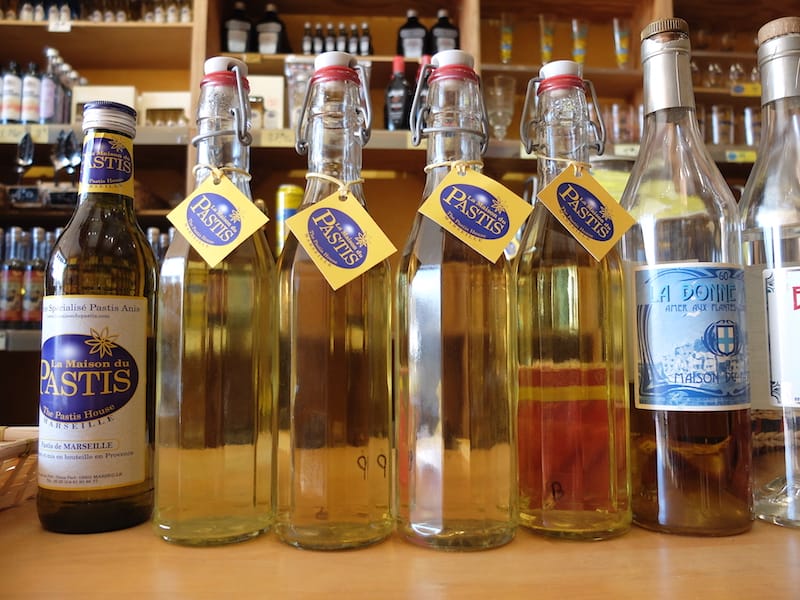
La Maison du Pastis
Fittingly, France’s first ever cave des anisés (anise-based spirit store) began in the birthplace of pastis. In 2002, owner Frédéric Bernard opened this Vieux-Port shop to highlight producers who “live in the shadow of industrial pastis.” The shop has a faithful following of local connoisseurs, younger folk who are fans of all things artisanal, and visitors searching for a souvenir.
From award-winning Boyer to Lapouge, a pastis made from the original Ricard recipe, the shop sells around 50 different brands of pastis plus their own in-house offering poured from stainless steel jugs. Choose from five cuvées including the Basic (coriander and cardamom), Régalade (for licorice lovers) and the Prestige, with a whopping 56 ingredients. Don’t be intimidated by the wide selection: Frederic and his staff will happily guide you with their encyclopedic pastis know-how.

Château des Creissauds
Crafted by local cocktail historian and distiller Guillaume Ferroni, this artisanal pastis is perfumed with 19 plants picked on its estate. Think rosemary that sprouts in the wild garrigue to savory and sage grown in the château’s garden. Each bottle takes 18 months to make since Château des Creissauds is one of the few pastis aged in oak barrels – and the only one that stamps its bottles with the vintage to celebrate the singularity of each year.
Located 10 miles from Marseille in Aubagne, the 19th-century château hosts distillery tours and a fantastic summer-only bar, Dans les Abres, tucked in the treetops. In Marseille, you get a taste at Ferroni’s clandestine bar, Carry Nation, or l’Épicerie l’Idéal.
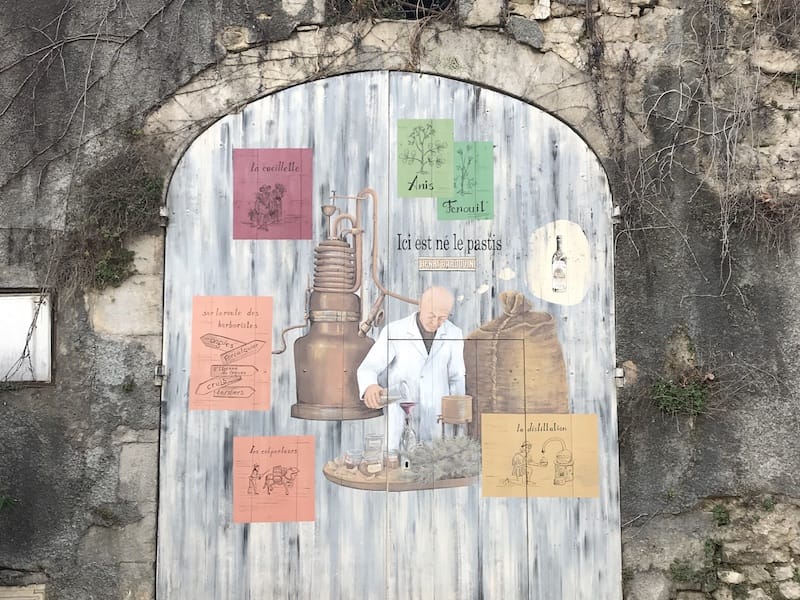
Henri Bardouin
Alain Robert wanted to “turn away from pastis’ lowbrow cliché to return it to its rich culinary tradition.” His 150-year-old Distilleries et Domaines de Provence is based in an Haute-Provence town reputed for its medicinal plants, an apt setting for an herbaceous liqueur. Henri Bardouin bursts with a bouquet of 65 plants and spices, from thyme and fennel plucked in nearby hills to Tonka beans and cardamom from further afield. Rigorously tested and expertly assembled, this incredibly flavorful, terroir-driven blend earns its self-named “grand cru” title.
If you can’t make it to Marseille, this is the only artisanal pastis to be sold in the US, Asia and Africa.
Editor’s note: Our Liquid Assets series offers an occasional look at key beverages – alcoholic and non – that help define the culinary cultures that CB covers.
 June 3, 2021 Apéro Alfresco
June 3, 2021 Apéro Alfresco
If the aperitif is “la prière du soir des Français,” (“the evening prayer of the […] Posted in Marseille December 11, 2023 Paule et Kopa
December 11, 2023 Paule et Kopa
Though Paris is littered with brasseries boasting classic French cuisine, Marseille […] Posted in Marseille August 18, 2023 Maison M&R
August 18, 2023 Maison M&R
A 16th-century tower stands at the southern edge of the Plage des Catalans, the closest […] Posted in Marseille
Published on February 12, 2021
Related stories
June 3, 2021
MarseilleIf the aperitif is “la prière du soir des Français,” (“the evening prayer of the French”), as writer Paul Morand famously quipped, the Marseillais are the most devout worshippers. Shortened to apéro here and across the south, the ritual of gathering with friends over drinks and food embodies our joie de vivre and laid-back lifestyle.…
December 11, 2023
MarseilleThough Paris is littered with brasseries boasting classic French cuisine, Marseille lacks restaurants that solely specialize in our traditional fare – a mix of Provençal garlic, tomatoes and olive oil, and the freshly caught delights of the Mediterranean. When we lamented this at a dinner party the other night, a woman chimed in, “What about…
August 18, 2023
MarseilleA 16th-century tower stands at the southern edge of the Plage des Catalans, the closest beach to Marseille’s city center. The Tour Paul was one of the city’s lazarets, quarantine stations for sick sailors to prevent disease from entering the city. In ruins after centuries of erosion, the Infirmerie Vielle (“Old Infirmary”) is now being…







































